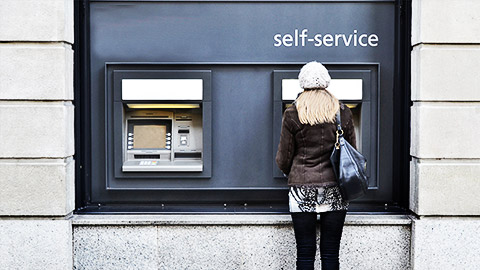The Financial Plan is an essential part of your business plan because it:
- sets out your financial goals for the short term as well as the long term
- helps you monitor your finances
- is essential if you are seeking a loan or investment for your business.
The Financial Plan is created after the marketing, production, purchasing and people plans have been completed as part of a business planning process.
The Financial Plan includes:
- Your financial goals
- Start-up costs
- Borrowing requirements
- Operating expenses forecast
- Cost of Goods (COGs)
- Sales Forecast
- Cash flow forecast
- Profit and Loss statement
- Break-even analysis
- Credit management
In this topic, we’ll look at a financial plan and the steps to take to develop a financial plan for your business.
By the end of this topic, you will understand:
- Documenting your financial goals
- How to identify your working capital requirements
- Different asset management strategies to consider
- Considerations when managing cash flow
- What you need to consider when identifying capital requirements
- How to prepare a budget
- How to prepare a projected profit statement.
Clarifying your business goals and financial goals takes consideration.

While we have already covered much of the "how-to" of financial planning, the drivers of your financial plan are your goals. Clarifying your business's economic goals takes consideration. Using the SMART formula helps clarify what you want, how you will achieve it, and the timing.
The SMART Formula
Read
Read the article '12 Business Goals Every Entrepreneur Wants to Achieve by Satchit Hasabnis to learn more about the SMART approach to setting business goals.
ACTIVITY
Are the following three financial goals SMART? Select 'Yes' or 'No' as your response.

How much cash do you need to run your business? Even a micro business requires cash in the bank to ensure debts, such as monthly rentals and necessary supplies, can be paid. A wholesaler or retailer requires even more capital to ensure they can pay for the inventory they need for their business and the warehousing of the stock.
Working capital is made up of three (3) components:
- Stock management
- Payment suppliers – creditor payments
- Collection of cash from customers – debtor collection
As you can read on business.vic.gov.au, working capital is often referred to as ‘the working capital cycle’, and it is the length of time it takes from using your cash to purchase stock, convert stock into a product, sell the product and then secure a sale and receive the cash.4
A business can use its working capital cycle to improve its short-term liquidity and increase its cash.
Watch the following 5-minutes-video to learn more about the working capital cycle presented by the Corporate Finance Institute:
There are three (3) methods used for analysing working capital requirements:
- Percentage of sales method
- Regression analysis method
- Cash conversion cycle method
The cash conversion cycle is the most commonly used method for analysing your working capital requirements, and we will focus on it. It calculates the days to convert the cash outflow to purchase stock into a cash inflow when the product is sold.
Read
This article by Business Victoria explains how to use the working capital cycle to increase your cash.Since a business rarely makes enough revenue to cover its expenses in the first few months, knowing how much capital you will need to cover for that time is essential.
To do that, you must work out your monthly expenses and calculate how much working capital you need, either from your savings or borrowed, to cover you for the first few months and other lean times that you will inevitably face.
ACTIVITY:
Working Capital Cycle = 75 + 20 – 90 = 5. The business will be out of pocket for five days before receiving the full payment.
Case study

Lara’s Lashes and Nails
In the last topic, Lara calculated her total operating expenses as $78,000 for the year.
Based on this, she would calculate her working capital requirements as $6,500 per month. But is that correct?
Some debts are not payable monthly. For example, she may need to pay her marketing costs for pamphlets in the first month, and she may need to stock her shelves with nail polish, gel, glue and so on at the same time.
She should develop a cash flow projection to understand how much working capital she needs every quarter.
Website
Business.gov.au has provided a step-by-step guide on preparing your cash flow statement and a template you can use.
Will your business require costly machinery and equipment?
Consider your options:
- Leasing the equipment
- Taking out a business loan
- Using a line of credit that has a redraw facility
- Buying second-hand
Before deciding on any asset purchase, ask yourself these questions:
- How long will you need the asset?
- Is it cost-effective?
- Will the extra business you make cover the expense of leasing or purchasing?
- Will the asset become outdated shortly? For example, software may need to be constantly updated. If so, choosing the subscription option many software companies offer may be better than purchasing one. The same applies to mobile phones.
- What are your current financial priorities? Are there other purchases that should be made first?
- How will the lease or purchase options affect your cash flow?
- What are the taxation implications of each alternative?
Managing your organisation’s assets, no matter what type, unlocks efficiency and greater accountability. It is a must-have in any successful business, whether a tiny local store or a multinational corporation serving millions.
Assets5 refers to anything owned by organisations used in business operations, such as computers, machines, desks, hardware and software, etc. Assets can be tangible (e.g. equipment) or intangible (e.g. goodwill, intellectual properties.6
Proper management of assets takes a systematic approach to maintaining assets so they provide optimal value for as long as possible. This reduces asset expenditure and boosts work performance through high-quality equipment.

To effectively manage the assets, owners should consider any of the following asset management strategies:
- Preventative maintenance
- Track the asset life
- Track depreciation of the assets
- Have a contingency plan
- Secure your assets to limit access to strengthen security and avoid theft and equipment damage.
Website
Business.gov.au provides some helpful considerations when choosing whether to buy or lease assets for your business.
Estimating asset requirements
Some businesses have huge asset requirements, and others have very few. Dental surgery can cost as much as $800,000 for highly specialised equipment such as drills, pumps, x-ray machines, dental chairs, etc. However, Lara’s Lashes requires only a salon bed, lighting and reception fit-out.
ACTIVITY
Consider a small local Garden and Landscaping business. What assets would be required to run the business?
Assets required: Lawnmower, trimmers, edger, blower, sprayer vehicles, equipment trailer. This article lists and explains the necessary landscaping tools.
How could you effectively manage these assets, whether leasing them or purchasing new (or second-hand) tools and machinery?
To manage the assets required for the business effectively, it is essential to implement effective maintenance procedures and proper storage and ensure that only qualified and skilled workers use these assets.

There is an age-old saying in business management that "Cash is King". This is because the first thing that will cause a business to run into financial trouble, even if it is profitable, is cash flow. If a company doesn’t have the money to pay its commitments when they are due, it can quickly run into financial problems from contractors, employees and the like.
Managing your cash flow is imperative, mainly if you are in a business that relies on invoicing customers, often for large sums. In this case, you may find that cash can take up to 30 days or more to flow into your accounts when you make the sale and supply the products or services.
A cash flow projection projects how much cash will flow into the business each month and how much will flow out to pay expenses. This enables you to make more informed decisions around tax and new equipment purchases and gives you a warning if you need a business loan.
Receipts – Payments = Net cash flow
You can also see the likely effect of a business change or decision, such as changing premises or hiring extra staff. You can add the related costs to your forecast to see the impact before deciding whether to proceed.
You should include best, worst and most likely case scenarios because doing so will allow you to anticipate your cash position if you suddenly hit lean times or have a better-than-expected month. Developing a contingency plan is a good idea.
Adding a contingency means adding extra cash that can be drawn on, such as taking out a provision for an over-draft if needed.
When developing a cash flow projection:
- Look at the invoices to be raised and paid to you during the month
- Consider the supplier bills to be paid by you during the month
- Consider other commitments like tax office obligations, salaries, rent and other fixed costs.
Your cash flow projection can help you make business decisions about significant purchases because you can tell how much cash is coming in and going out of the business each month.
Read
Read in more detail about developing a cash flow projection.
Website
Many bank and government websites will provide templates for a cash flow forecast. The Template created by Business Victoria is a good example that presents some tips for managing cash flow: the original Template and related explanation.

Your cash flow forecast will inform you your burn rate and how much cash you need to keep on hand every month. In the early stages of your business venture, you will need to fund the capital requirements from your funds or venture capital that you source elsewhere. The estimate needs to be as realistic as possible. If your estimate is too low and you do not have enough cash, your business will fail. Under-capitalisation is one of the primary causes of small business failure.
Website
This template by business.gov.au shows you how to set up a balance sheet.The original template and related explanation can be found here.

At this stage, you should work out a budget for your business to help you manage your capital and grow the business. You can then track the business’s performance against your budget targets to keep you motivated.
While your forecast states the actual expectations for results, a budget lays out the plan for what you want to achieve. Your budget becomes your target.
Your budget is a separate document. It is a modified version of your financial plan created for a financial year. Once finalised, it will not be modified. It will contain a budgeted monthly income statement, budgeted balance sheet and budgeted cash flow statement. This document will run alongside your finance plan and forecasting.
You will have a goal in mind for your business, and usually, you want to stretch yourself and your staff to achieve better-than-average results. You use your budget to capture these goals/targets. You will monitor your budget weekly or monthly, calculating the variance between what you have achieved and what you want to achieve. This is the time to consider what sales tactics have worked, what have not, and how you have managed expenses.
Whatever the results, you will not alter the budget until the year-end when you reset targets.
On the other hand, you will usually review your forecast monthly to ensure you will have enough working capital for the business going forward. If you do not, you might have to:
- make adjustments to expenditure
- follow up on unpaid invoices (debtor management)
- postpone purchases
- draw down a loan you have organised from your lending institution.
Watch
Watch this video by Right Source to learn how to prepare a company's annual budget.
Website
www.business.gov.au provides some great information about creating a budget, and you can also find some helpful templates.Use the following questions to check your knowledge:
-
What do you need to include in a financial plan?
- Your financial goals
- Start-up costs
- Borrowing requirements
- Operating expenses forecast
- Cost of Goods (COGs)
- Sales Forecast
- Cash flow forecast
- Profit and Loss statement
- Break-even analysis
- Credit management
-
What's the difference between a financial forecast and a budget?
A financial forecast outlines the expected results of the business and indicates where the business is going. It is updated regularly. A budget is a plan for where the business wants to go and contains targets. Once created for 12 months, the budget is not updated. It is created once for a given financial year.
-
Why might you lease a vehicle for the business rather than purchase it?
Leasing a vehicle frees up cash, and buying a vehicle uses up cash and reduces your capital. So you might lease to free up this cash to enable you to purchase other assets or pay company bills.
-
How do you calculate net cash flow?
Receipts – Payments = Net cash flow
-
What is the SMART system, and how is it used to establish business goals?
SMART is a guide to setting effective goals. It is an acronym that defines the parameters that can help you to plan and achieve your business goals.
- S – Specific
- M – Measurable
- A – Achievable
- R – Relevant
- T – Timely
